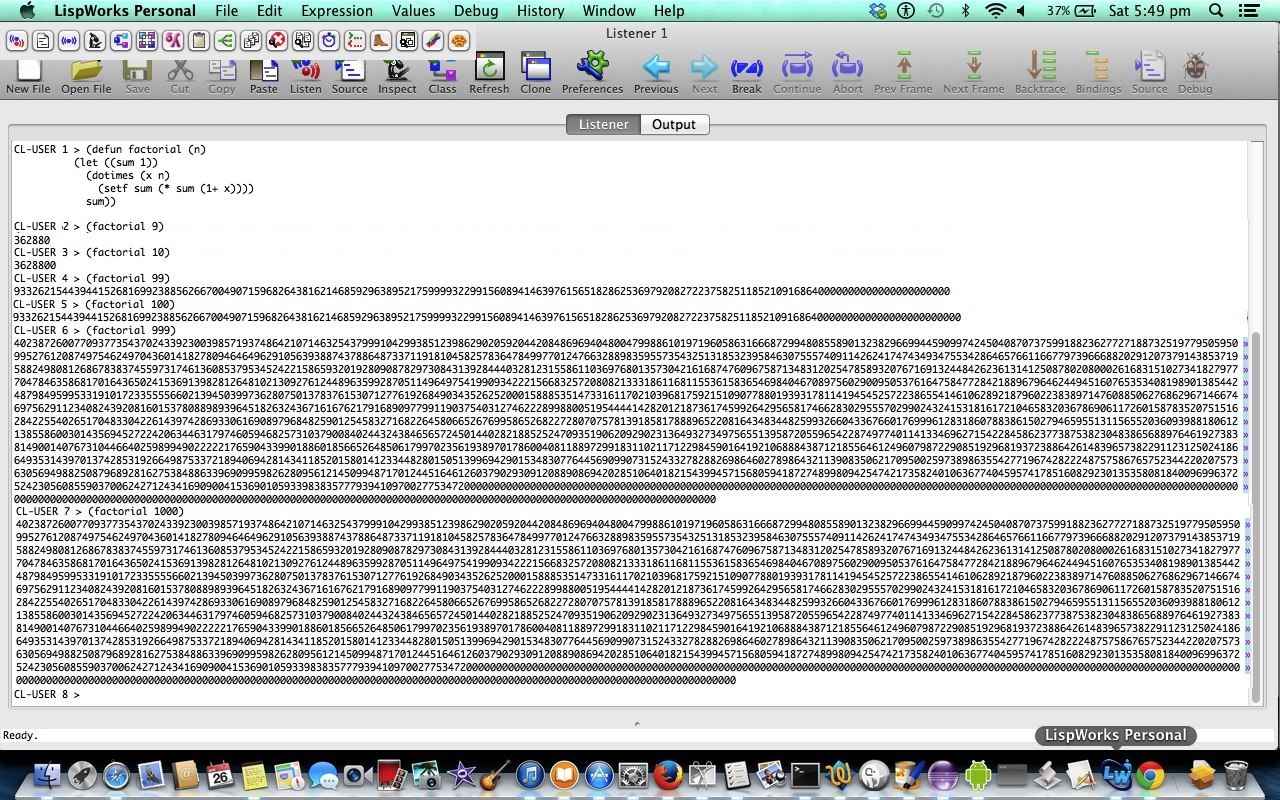Have you heard of Lisp, the programming language? Do you remember how incredible Hewlett Packard calculators were back in the 1970’s (we did as Land Surveyors … they were the bee’s knees, especially to program for those Land Surveying calculations). And do you (older users) remember the excitement regarding reverse Polish notation? Well, Lisp, the second oldest high-level language (after Fortran) uses this reverse Polish notation and thinking.
Am no expert with Lisp, as you’ll see, and we’ll defer to code available on the net and contributed by others, but have to mention its incredible mathematical scope, for instance, with its functionality for huge numbers (integers). You will notice with languages like C++ it is not at all easy doing a calculation like the factorial of 1000 … or 1000! … or 1000 x 999 x 998 x —> x 2 x 1 … but Lisp does it with considerable ease. As a matter of interest, as far as this type of big integer in Java, you may want to check on the BigO data type.
Today’s tutorial introduces you to Lisp we install using LispWorks Personal on a Mac laptop, and execute a Hello World and some large factorial calculations. Lisp, being the old language it is, is a very functional language, and although global variables are allowed, the Lisp “way” is not to resort to such approaches.
Below are some links regarding Lisp you may want to peruse:
- Lisp information from Wikipedia
- LispWorks Personal Edition for MacBook Pro
- Lisp Quickstart where factorial code is from … thanks
- Basic Lisp Programming Tutorial
- Interactive entry in Lisp
Will leave you with some downloadable programming Lisp source code you could call helloworld

If this was interesting you may be interested in this too.





 Menu
Menu









